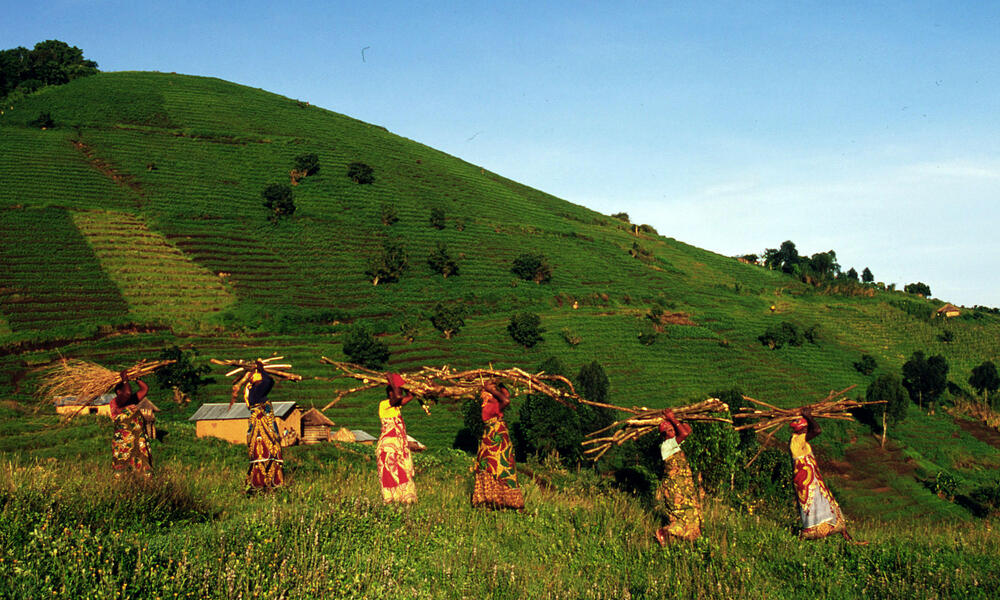Humans have inhabited the forests of the Congo Basin for tens of thousands of years. Today, the Congo Basin provides food, medicine, water, materials and shelter for over 75 million people. Among some 150 different ethnic groups, the Ba'Aka, BaKa, BaMbuti, Efe and other related groups—often referred to as Pygmies—are today's most visible representatives of an ancient hunter-gatherer lifestyle. They possess an incredible knowledge of the forest, its animals and its medicinal plants.
Most people in the Congo Basin remain heavily dependent on the forest for subsistence and raw materials, as a complement to agricultural activities. As populations rise, pressure on forests continues to increase. Forest edges of the forest-savanna mosaic bear the brunt of the population density, along with the banks of the larger navigable rivers, including the Congo and Ubangi Rivers.
Construction of roads has greatly facilitated access to the interior of the forest, and many people have relocated close to roads. But logging, oil palm plantations, population growth and road development have strained the traditional resource management system.
The Congo Basin covers some of the poorest countries on Earth. By focusing on the protection and sustainable use of natural resources, WWF seeks to ensure that the Congo Basin's forest and freshwater ecosystems will continue to be a major source of livelihood improvement for the region's people.


 Chimpanzee
Chimpanzee
 Cross River Gorilla
Cross River Gorilla
 Mountain Gorilla
Mountain Gorilla
 African Elephant
African Elephant
 African forest elephant
African forest elephant
 Western Lowland Gorilla
Western Lowland Gorilla
 Gorilla
Gorilla
 Eastern Lowland Gorilla
Eastern Lowland Gorilla
 Bonobo
Bonobo





 Kerry Cesareo
Senior Vice President, Forests
Kerry Cesareo
Senior Vice President, Forests
 Kate Newman
Vice President, Sustainable Infrastructure and Public Sector Initiatives
Kate Newman
Vice President, Sustainable Infrastructure and Public Sector Initiatives
 Bas Huijbregts
African Species Director, Wildlife Conservation Program
Bas Huijbregts
African Species Director, Wildlife Conservation Program
 Allard Blom
Managing Director, Congo Basin
Allard Blom
Managing Director, Congo Basin